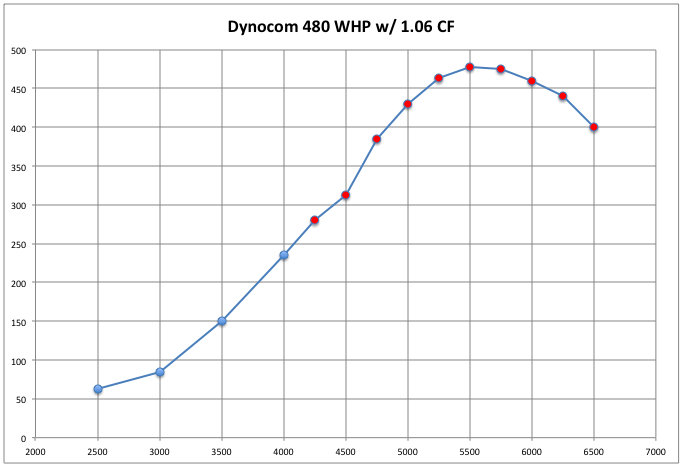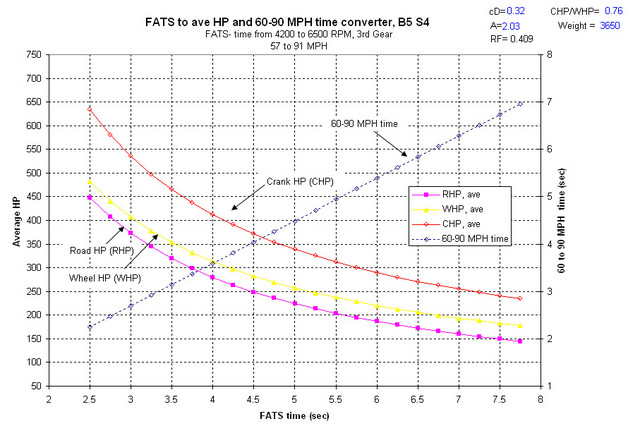The recent posts about JAEInnovation’s builds have introduced a dynamometer that I previously had not heard of, a Dynocom. As those posts pointed out, I did not have data available to crosscheck the accuracy of this dyno, so statements about vehicle wheel horsepower are of low confidence.
I was in touch with a person who had their S4 measured on this dyno (operated by Doman8 Performance), and they informed me that data logging was showing a FATS of 3.2 seconds and the dyno chart produced by the Dynocom measured a peak of 480 whp. The wheel horsepower curve is reproduced below:

To try and estimate what the accuracy of the dyno is I began correlating the wheel horsepower curve with the FATS time. The first step was to pull samples of the wheel HP data over the FATS pull range, taking samples at every 250 rpm beginning at 4250 rpm and continuing to 6500 rpm. These points are shown in the chart above highlighted in red.
The average whp of these ten points is 412. The median value is 435. I decided to use the median because the peaky curve allows the low figures at the start to pull the average down substantially.
The dyno chart showed that a 6% correction had been applied for atmospheric conditions. As has been previously mentioned, this correction should not be applied to a boosted engine. After backing out the atmospheric correction factor the result is 410 wheel HP.
Now I look at how the FATS average wheel HP calculator compares with this value.

A FATS time of 3.2 seconds should be the product of an average wheel HP over the FATS range of approximately 380 whp. The result I estimated from the dyno chart was 410 whp.
If the Dynocom has a similar difference to road values as the Dynojet, which I have found to differ by approximately 6%, the Dynocom average wheel horsepower is more likely 387.
The FATS estimate of 380 whp compares well with the adjusted Dynocom estimate of 387 whp.
If the peak wheel horsepower reading of 480 is adjusted in accordance with this process the result is a peak of 427 wheel horsepower.
Conclusion:
A single data point is not something to rush out and use to define the accuracy of the dyno. On the other hand, it’s better than nothing, and the results obtained point to agreement between the two methods of arriving at the average wheel horsepower.
